This is the fourth post in a series of tests of the Fujifilm GFX 100, Mark II, which was released this week. You can find all the posts in this series by going to the Categories pane in the right hand panel and clicking on “GFX 100 II”.
In the previous post we observed some anolmolies in GFX 100 II dark field exposures with long exposures. My first question was: “Is this a sample defect?”. I also wanted to look at the anomaly in more detail. This post will deal with both of those things.
Here’s a reduced size version of my 60-second GFX 100 II dark-field exposure, with the camera set of 14-bit precision and long exposure noise reduction (LENR) turned off. This was developed in Adobe Camera Raw with the exposure, contrast, blacks, and shadows control pushed all the way to the right, and default settings otherwise.
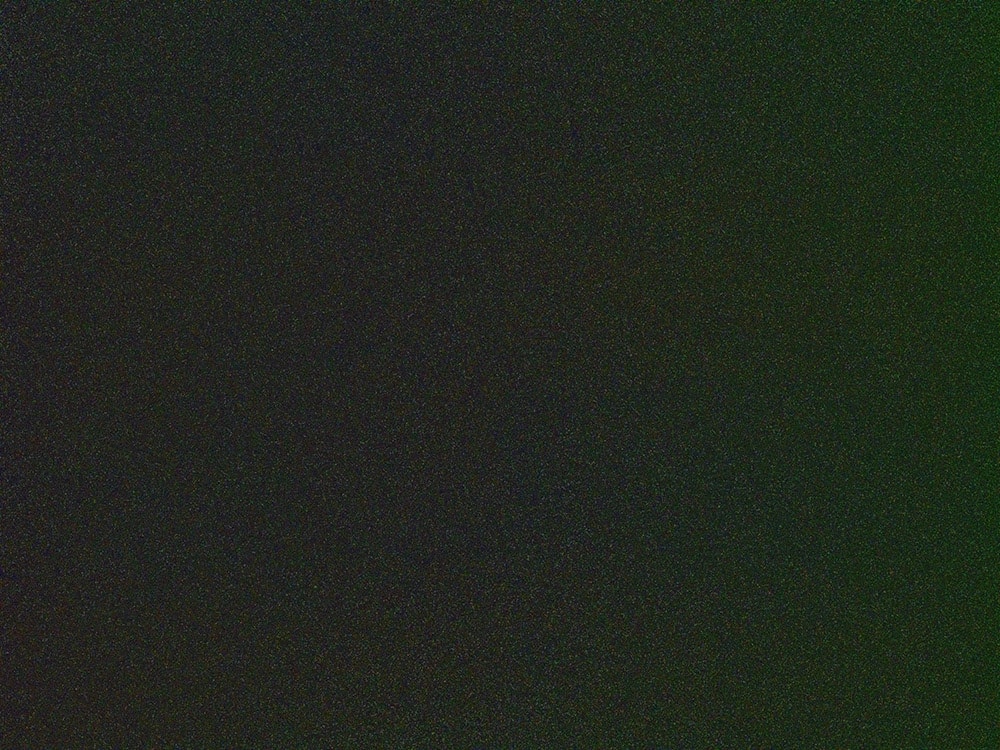
The right side is greenish.
Two DPR members made GFX 100 II shots for me under the same conditions, and here, they are developed the same way+ as the image above.
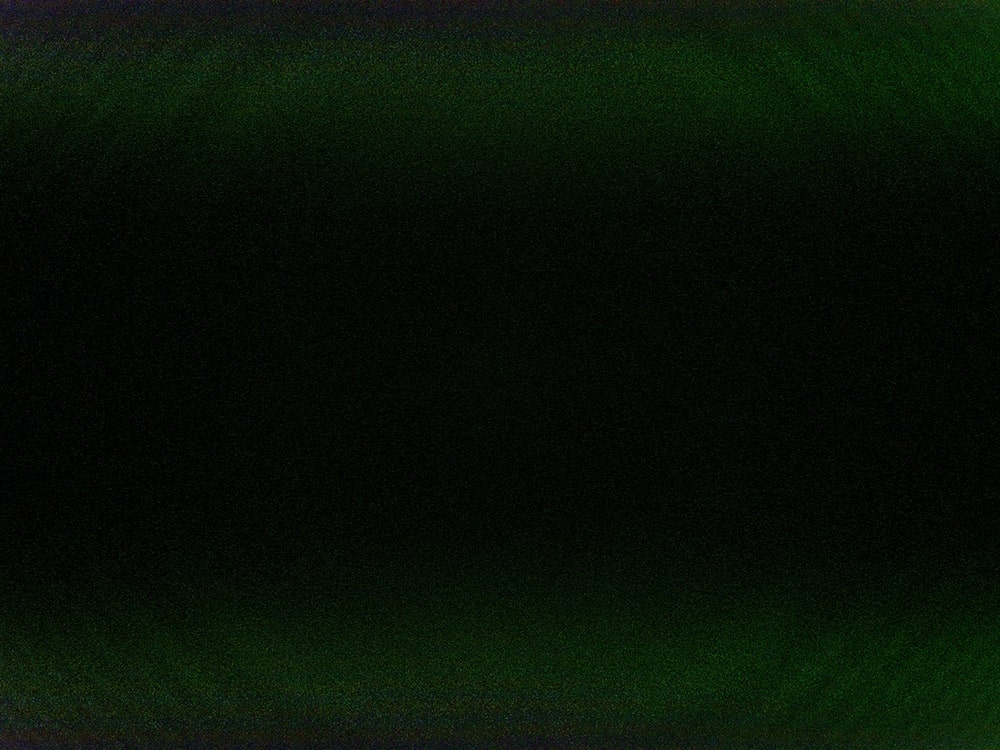
In this image, the green-tinged regions are at the top and the bottom. This looks more like traditional amp glo, which is an effect where the heat generated by the programmable gain amplifiers and analog to digital converters at the the top and bottom edges of the sensor adversely affects the accuracy of the readout. That effect occurs with the GFX 50 megapixel sensors, but it is usually in the bottom of the image only and the color tinge is magenta, not green.
Here’s another sample image made and processed under the same conditions.
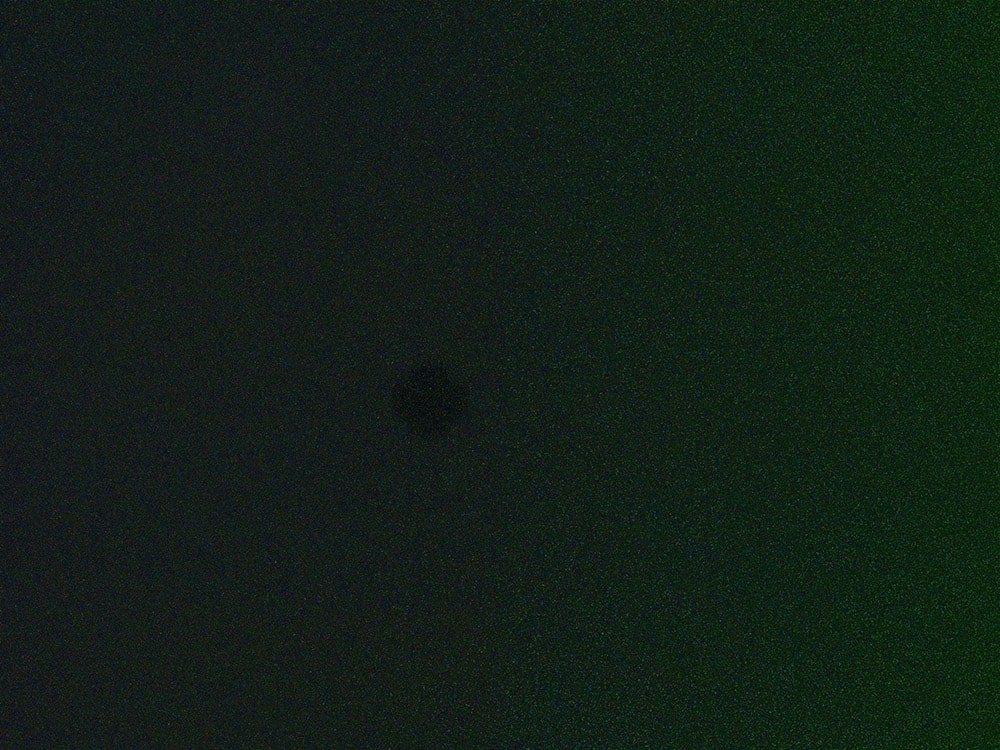
This looks more like my image.
Yesterday, when I looked at the dark field spectra, I looked at 600×600 pixel crops. When I looked at the full frame of the image set, the EDR looks like this:
If we compare full frame and cropped EDR calculations, we get this:
The general effect is the same, but it’s diminished. I find it curious that the raw channels are so different.
Looking at the full frame spectra, here’s what we see:
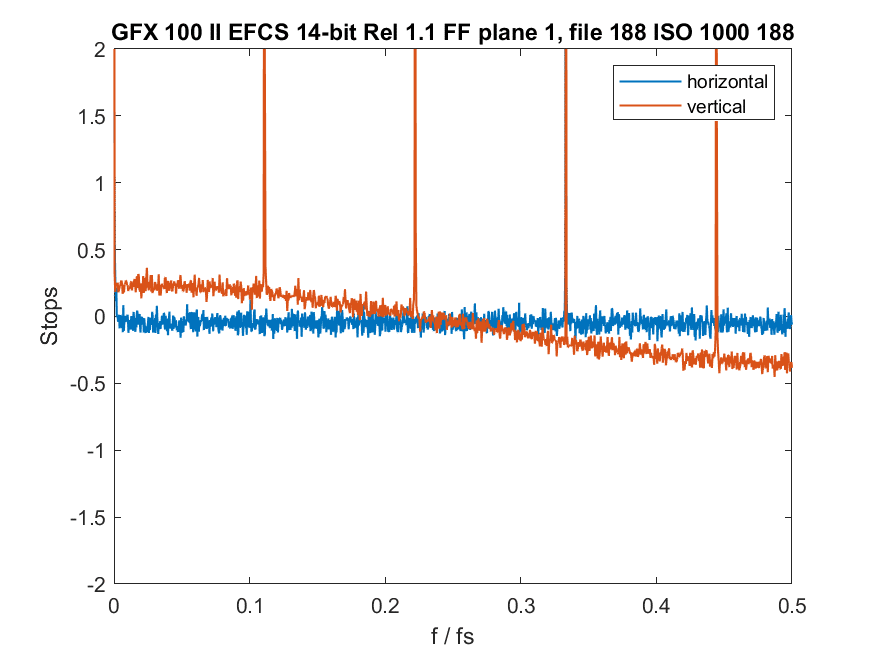
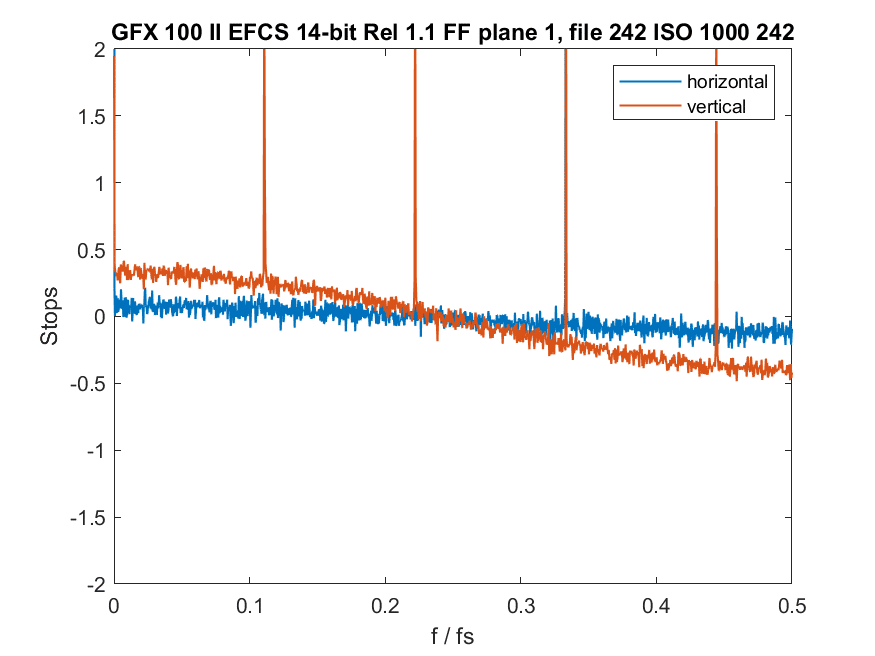
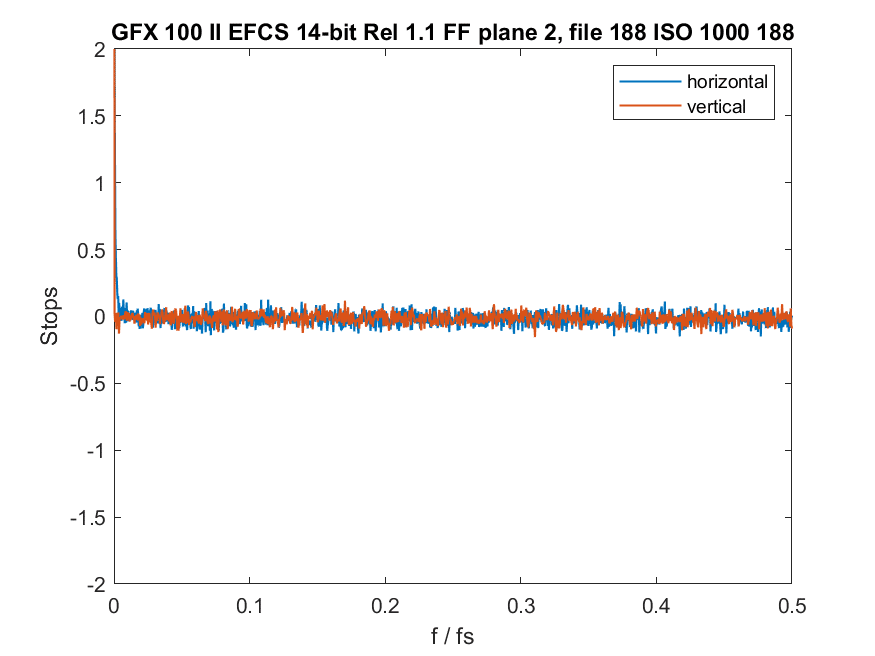
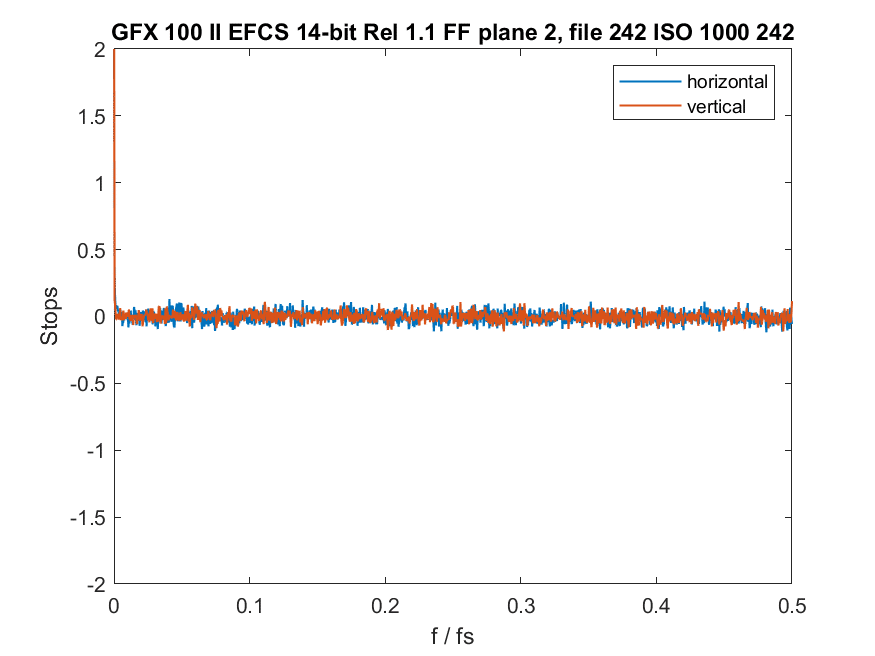
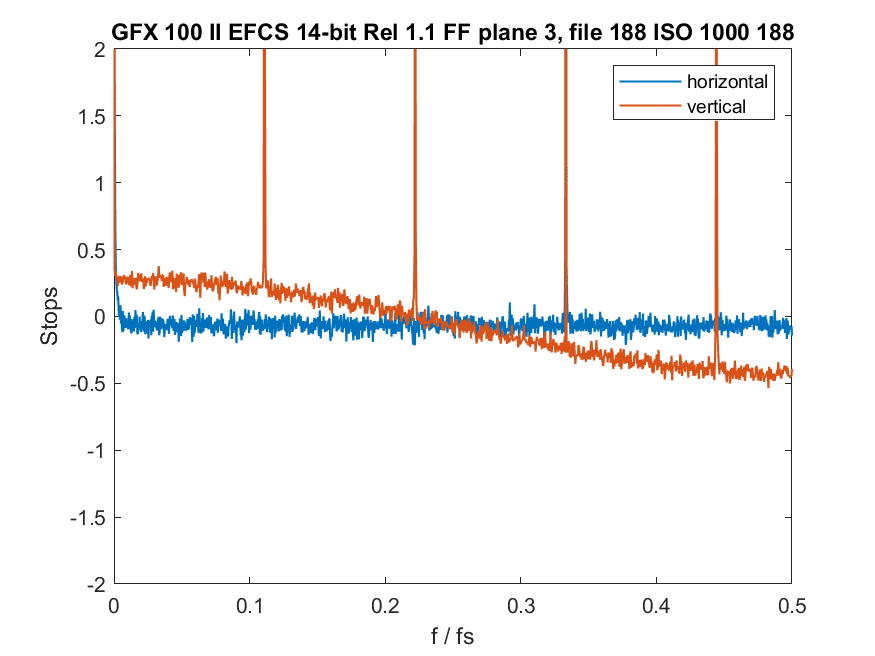
In plane 3, the horizontal data is slightly lowpass filtered, or it’s the gradient across the sensor giving that impression.
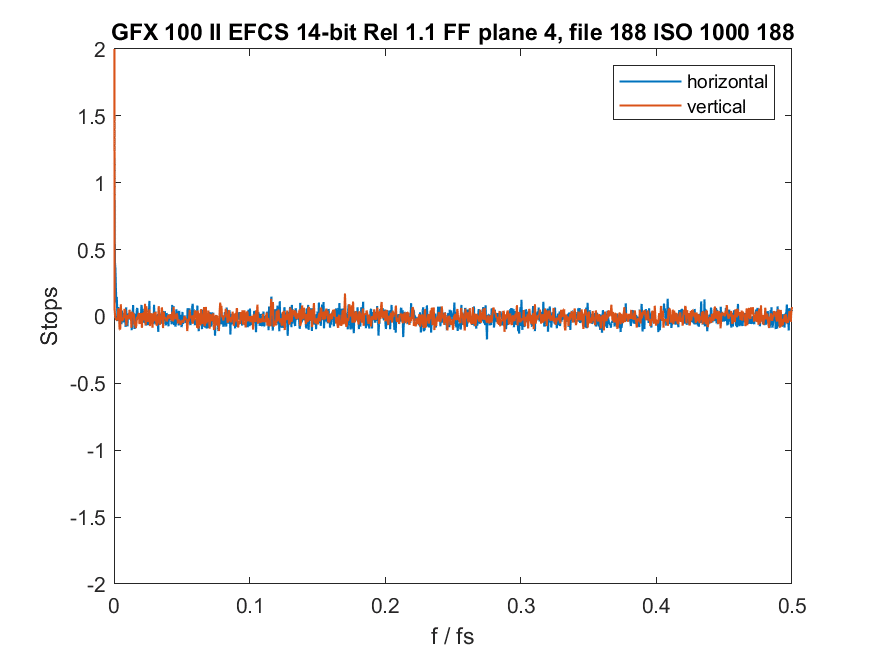
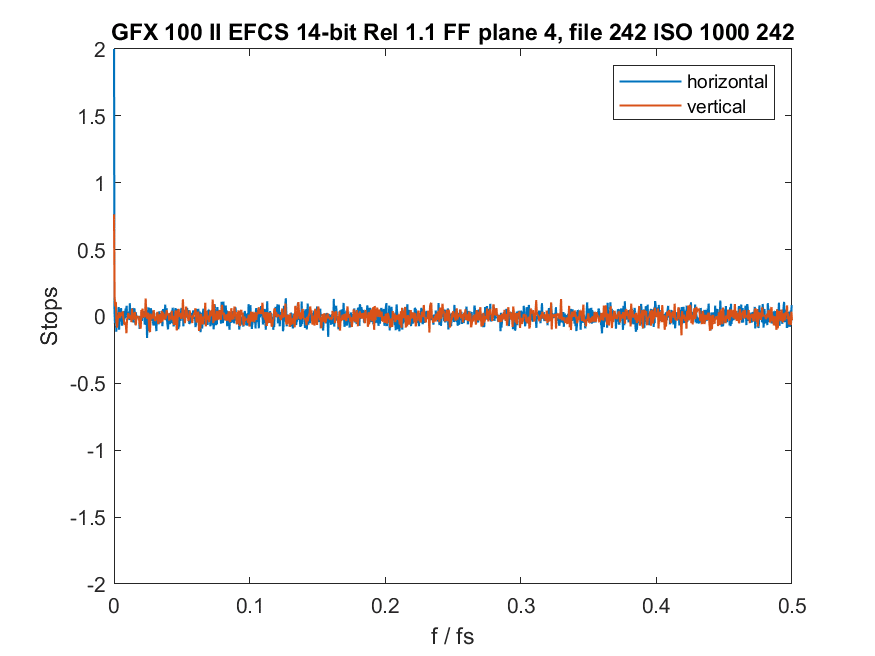
If we look at my 1/4000 second and 60 second images with RawDigger, we can see an average blackpoint shift between them.
In the 1/4000 second image, the averages for all four planes are all within 0.7 counts of 1024, and in the 60 second image, the G channel has slipped to 1022.9. The standard deviations, or sigmas, which were all about the same for the 1/4000 second image, now vary from 15.3 to 20.5.
Now let’s look at a 60-second image exposed using LENR.

The sigmas tend to be a little better, but not for all planes. The black point has dropped by about 8 counts.
I’m going to ignore this for a while and continue to test the camera. This looks like something that will mainly affect astrophotographers, and they often do black frame subtraction which should help a lot.
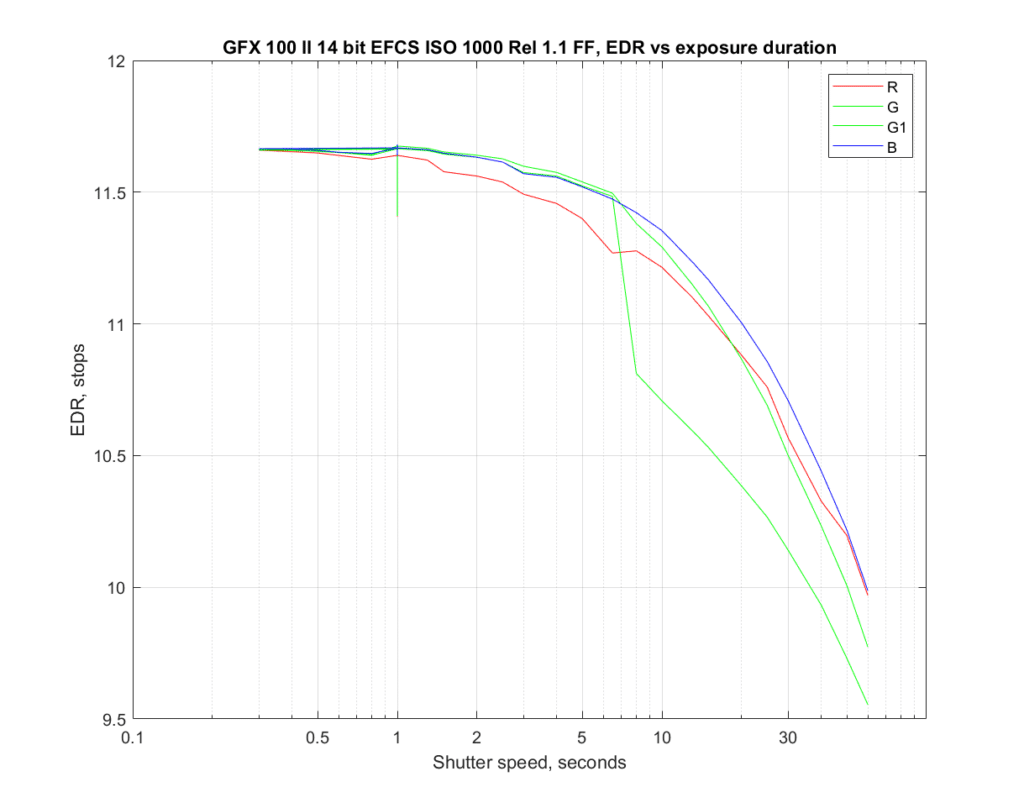
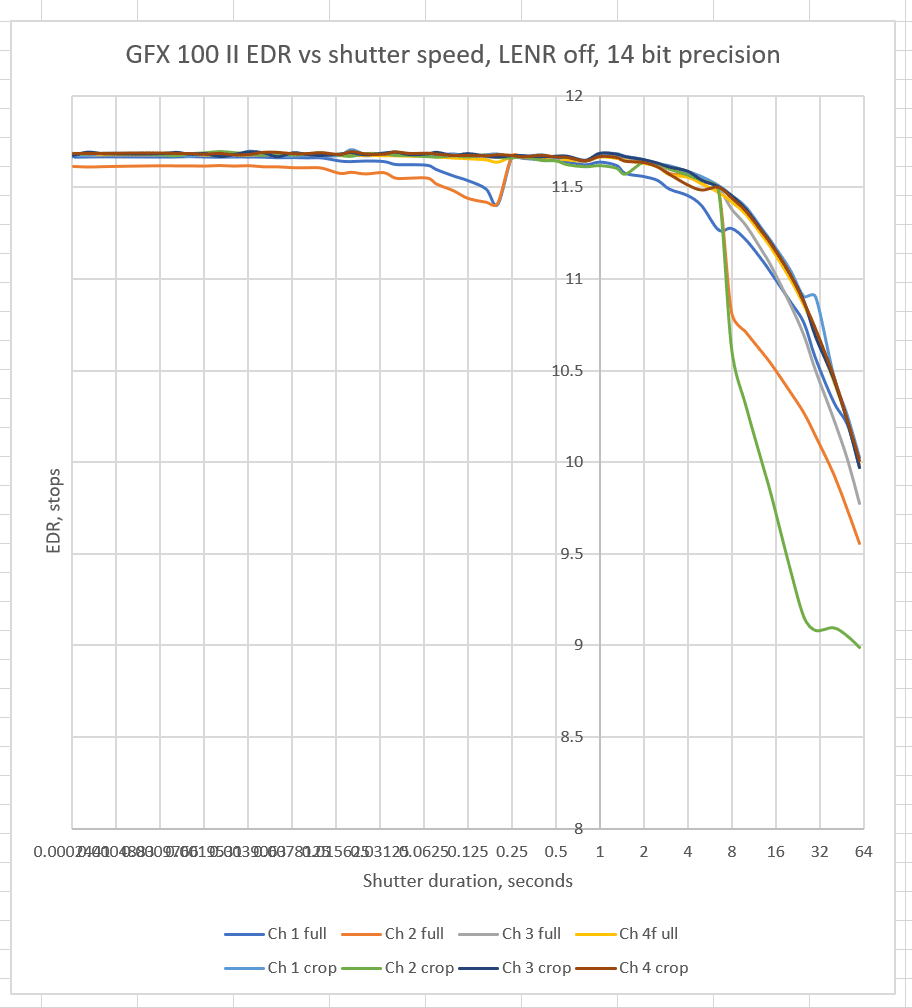
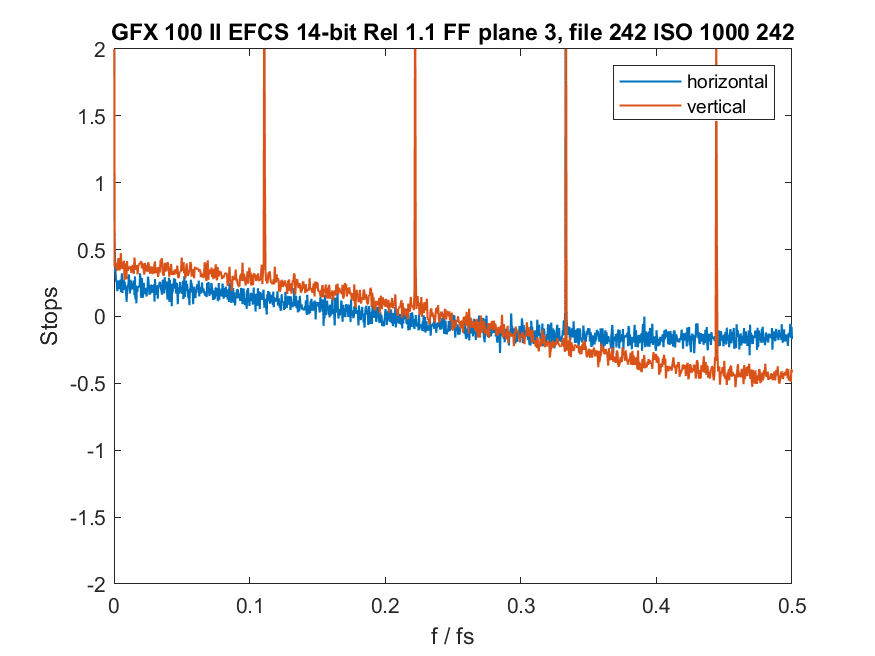


Two takes:
1) Mirrorless camera keep the sensor powered all the time when camera is on, so the heat noise and hot pixels will vary depending on how the camera has been operated prior to pressing shutter. Even while going through menus or taken pics, the sensor keeps measuring light on the top LCD, indicating that it is on. I have noticed this causing visible amp glow on GFX50R at high ISO if the camera has been heavily operated. Letting it cool a bit makes it go away.
So in order to reduce sample variation, the shots should be taken at sameish ambient temperature so that camera has cooled to the sameish temperature before turning on or pressing shutter.
2) one told on fujirumors that the GFX100 II sensor has doubled the readout interface on the other side of the sensor. He/she has previously leaked X-T3 and GFX100 sensor datasheets, so I assume he knows what he is talking about.
So the double amp glow indicates that to be the case. It is likely the same method X-T3 /X-T4 sensor has, where there is double readout lines, which allow dual sampling features. There were some neat tricks on the X-T3 sensor datasheet regarding this, which would allow reduce blackout by doing intermediate sampling at different gain/bit depth while exposing. Older GFX100 sensor was based on same tech otherwise, but it lacked that dual readout setup, so maybe they just brought that to the old sensor?
Jim,
Thanks for the tests, the incredibly insightful technical info along with the ability to explain it to someone who forgot all his undergraduate engineering.
I was considering selling the 100s but will now keep it and use it along with my 100 II as I do shoot astrophotography.